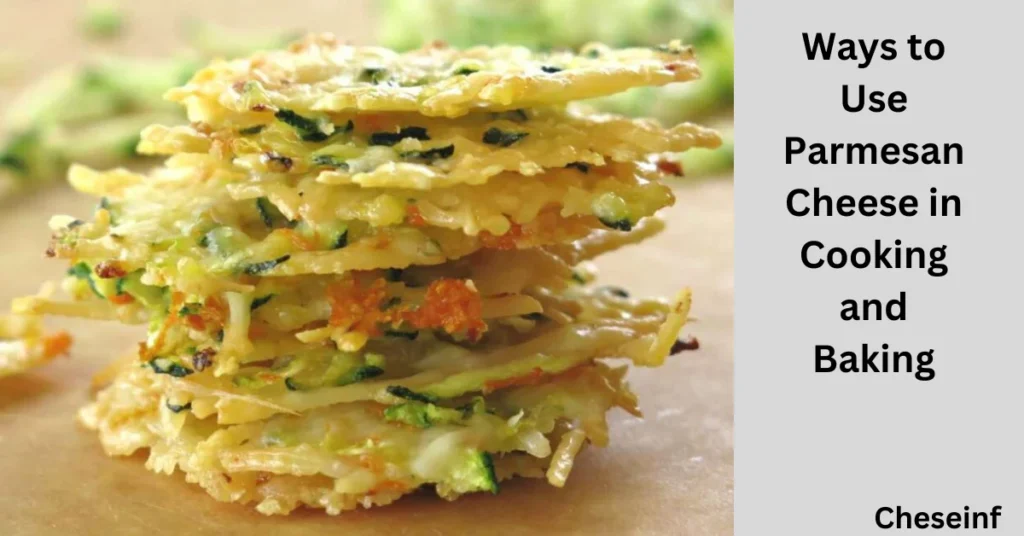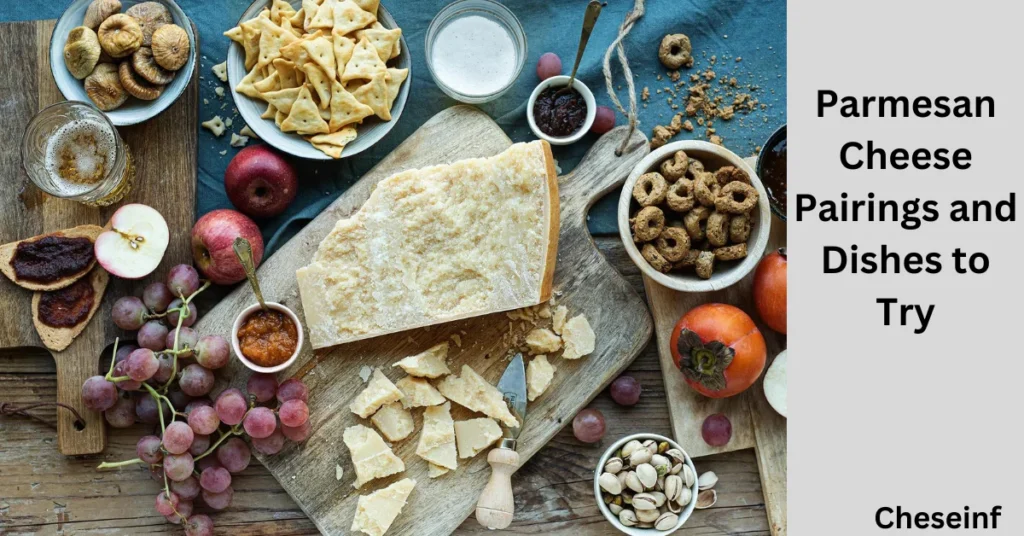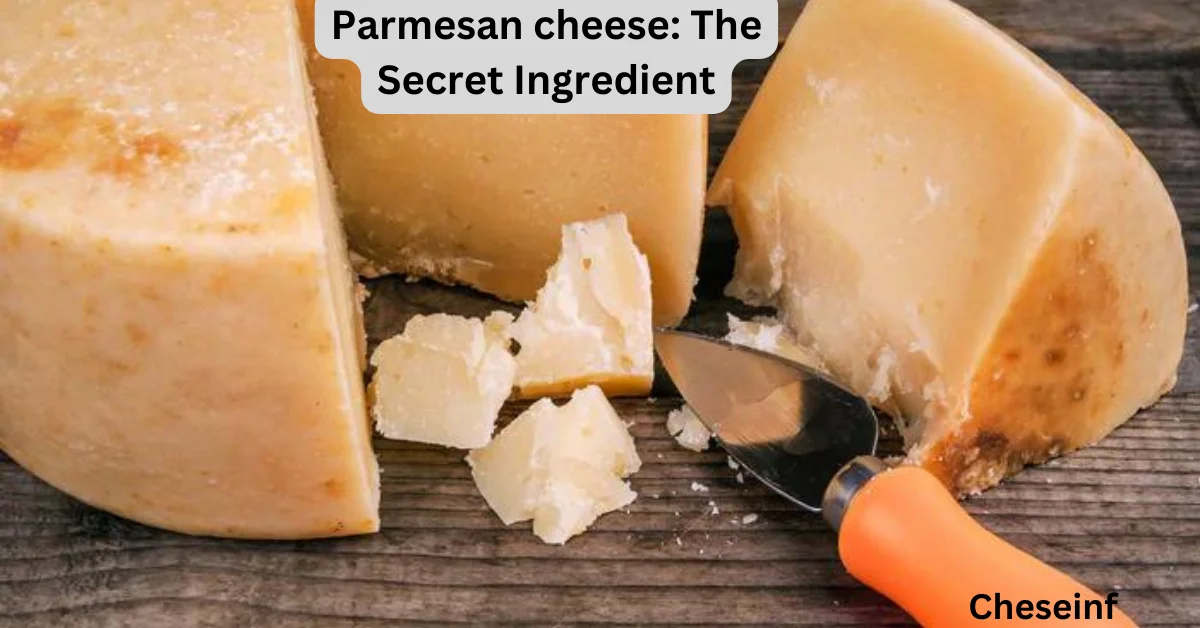Hey everyone, fellow food lovers! Ever feel like your home cooking just needs a little… something? You know, Parmesan cheese that extra kick to turn dinner from “meh” to amazing? Well, buckle up because I’m about to share a secret weapon for seriously upping your kitchen game: Parmesan cheese!
This isn’t your average cheese, folks. We’re talking salty, nutty, and bursting with a flavor bomb called umami. It’s about to become your new BFF in the kitchen. From pasta perfection to creamy soups, parmesan can seriously transform your dishes. But wait, there’s more! We’ll even explore some surprising ways to use it in desserts and even cocktails (yes, you read that right!). So get ready to unleash the full power of parmesan and take your cooking skills from good to gourmet! Let’s dive in!
Parmesan Cheese: A Pantry Staple:
Hey there, foodie friend! Have you ever felt like your home cooking is missing a certain je ne sais quoi? You know, that extra oomph to take your dishes from ho-hum to haute cuisine? Well, listen up, because we’ve got the inside scoop on the secret ingredient to give your recipes that restaurant-quality flair. It’s none other than parmesan cheese! This salty, nutty, umami-packed goodness is about to become your new best friend in the kitchen. Whether it’s topping pastas, sprinkling onto soups, or even using in unexpected ways like desserts or cocktails, parmesan can transform the flavors of your cooking. So keep reading as we unlock the full potential of parmesan to take your culinary skills to the next level!
A Versatile Ingredient:
Parmesan cheese is one of the most versatile ingredients to have in your pantry. It adds a savory, salty kick to everything from pasta and pizza to salads, soups, and beyond. Whether you’re making a simple tomato sauce, pesto, or alfredo, Parmesan helps round out the flavor. It also makes a great topping for bruschetta, garlic bread, or olive oil dipping.
Buy the Good Stuff:
When it comes to Parmesan, quality matters. Look for authentic Parmigiano-Reggiano from Italy and avoid pre-grated cheese or “parmesan”—they lack the complexity of flavor and meltability of the real deal. Parmigiano-Reggiano is aged at least 12 months, resulting in a hard, crumbly cheese with caramel-like, nutty notes. A little goes a long way, so while it’s more expensive, it will last for months.
How to Use:
There are a few ways to incorporate Parmesan into your cooking. Grate it over pasta, pizza, risotto or salads using the large holes of a box grater or microplane.
- Add crumbled or shredded Parmesan to tomato sauce, pesto, meatballs or egg dishes while cooking.
- Make parmesan crisps by sprinkling mounds of grated cheese onto a baking sheet and baking at 400 F until melted and lightly browned.
- Or simply slice or break off chunks to enjoy with a glass of wine or balsamic glaze for dipping.
- however you use it, Parmesan cheese adds a layer of savory flavor to brighten any dish. Keep a wedge in your refrigerator at all times—your taste buds will thank you.
The Unique Flavor and Texture of Parmesan:
Parmesan cheese has a flavor and texture unlike any other cheese. Its savory, nutty notes come from aging the cheese for at least 12 months. As it ages, Parmesan develops crunchy crystals called tyrosine, giving it a distinctive granular texture.
Aged to Perfection:
The longer Parmesan ages, the more complex its flavor becomes. At 12 months, it has subtle caramel notes with a mild tang. At 18 months, fruity flavors emerge and the cheese becomes crumblier. Beyond 2 years, Parmesan takes on robust savory and spicy flavors with a granular texture that melts in your mouth. For the fullest flavor, look for wedges of Parmigiano-Reggiano aged 24 months or longer.
The King of Cheeses:
Parmesan reigns supreme over other hard cheeses because of its versatility and meltability. Grated or shaved, it adds a kick of umami to pasta, risotto, pizza, and salads. Add a few shards to an antipasto platter, or just enjoy it on its own with slices of apple or pear.
When melted, Parmesan coats other foods in a gooey, salty layer. It helps create crispy crusts on dishes like chicken parmigiana, veal marsala, and eggplant parmesan. For extra decadence, make Parmesan crisps by topping breadsticks or crackers with grated Parmesan and baking until bubbling. Let cool until crisp, and enjoy your cheesy treats!
With a flavor that enhances almost any savory dish, it’s no wonder Parmesan cheese is considered a pantry staple. Keep a wedge or block on hand, and discover how this versatile ingredient can add richness and depth to your home cooking. Your taste buds will thank you.
Ways to Use Parmesan Cheese in Cooking and Baking:

Parmesan cheese adds a savory, salty kick to so many recipes. Once you start cooking with it, you’ll wonder how you ever lived without it. Here are some of the many ways you can use Parmesan cheese to boost the flavor of your food.
Sprinkled on Top:
The simplest way to use Parmesan cheese is to sprinkle it on top of your dish as a garnish. Add it to pasta, risotto, soup, or salad for extra flavor and crunch. A little goes a long way, so start with a tablespoon or two and add more to taste.
Mixed into Dishes:
Stir grated or shredded Parmesan cheese directly into egg dishes like omelets, frittatas, and scrambles. It melts into the eggs and infuses them with a savory, nutty flavor. Parmesan cheese also works great mixed into mashed potatoes, polenta, rice, and vegetable dishes.
As a Coating:
Use grated Parmesan cheese as a coating for meats like chicken breasts, fish fillets, or veal cutlets before pan-frying or baking them. The cheese will form a delicious, crispy crust as it cooks. You can also coat eggplant slices, zucchini sticks, or other vegetables in Parmesan cheese and breadcrumbs before baking for healthy, homemade vegetable fingers.
In Sauces and Dressings:
- Whisk grated Parmesan cheese into creamy pasta sauces, pesto, or salad dressings for extra flavor. A little Parmesan helps thicken Alfredo sauce and gives it a distinctive savory kick.
- You can also make a simple lemon Parmesan vinaigrette by whisking together olive oil, lemon juice, Parmesan, garlic, and herbs.
- Toss it with salad greens for a bright, tangy flavor.
- Whether you’re cooking Italian classics like lasagna and risotto or just wanting to add more flavor to your weeknight meals, Parmesan cheese is a must-have ingredient in any home cook’s pantry.
- Use it liberally in your cooking and baking—your taste buds will thank you!
Parmesan Cheese Pairings and Dishes to Try:

Parmesan cheese is one of the most versatile ingredients to have in your kitchen. Its savory, nutty flavor pairs well with so many foods. Here are some classic parmesan pairings and dishes to try.
Pasta:
Toss parmesan cheese with your favorite pasta like spaghetti, penne or linguine. The starchy pasta is a perfect canvas for the salty parmesan and its rich, umami flavor. For extra decadence, add parmesan to pasta dishes with cream or tomato sauces. A little goes a long way, so start with 1/4 cup of grated parmesan and add more to taste.
Salad:
Sprinkle parmesan cheese on top of salads, especially those with bitter greens like arugula or radicchio. The salty cheese helps balance the bitterness. Parmesan also pairs nicely with Caesar salad. For a simple salad, toss romaine lettuce, croutons and a lemony dressing, then top with parmesan cheese.
Pizza and flatbread:
Parmesan cheese is a key ingredient in pizza margherita and other Italian flatbreads. Its savory flavor enhances the tomato sauce and fresh basil. Next time you make pizza or focaccia at home, sprinkle on some grated parmesan cheese before serving.
Soup:
Parmesan cheese can be an unexpected but delicious addition to soups like minestrone, tomato soup or bean soup. Its nutty, umami-packed flavor adds richness and savory depth. Simply top your bowl of soup with 1 to 2 tablespoons of grated parmesan cheese. Stir and enjoy the mix of flavors and textures.
Eggs:
Grate parmesan cheese over scrambled eggs, frittatas or omelets. The cheese melts into the eggs, infusing them with a savory, salty flavor. For extra decadence, add parmesan to egg dishes with cream, mushrooms or asparagus. A little parmesan cheese can elevate a simple plate of scrambled eggs into a gourmet brunch dish.
Whether topping a fresh salad, scrambled eggs or a bowl of pasta, parmesan cheese adds a savory kick of flavor to any dish. Experiment by incorporating parmesan into your favorite recipes or trying classic Italian-inspired pairings. A little of this flavorful cheese goes a long way.
Frequently Asked Questions About Parmesan Cheese:
Parmesan cheese is one of the most popular cheeses in Italian cuisine, but many home cooks still have questions about how to use it. Here are some of the common FAQs about this flavorful cheese.
Q1: How is Parmesan cheese made?
Parmesan cheese is made from cow’s milk, usually from the Parmigiano-Reggiano or Parmesan breeds. The milk is cultured, then heated and coagulated into curds using rennet or other coagulating enzymes. The curds are then cooked, molded into wheels, and aged for at least 12 months up to 3 years. As it ages, natural enzymes break down the cheese into compounds that give aged Parmesan its distinctive flavor.
Q2: What does Parmesan cheese taste like?
Parmesan has a rich, savory, and slightly salty flavor with nutty notes. As it ages, the flavor becomes more complex, with hints of caramel and fruitiness. The aging process also causes Parmesan to develop a crystalline texture that has a satisfying crunch when grated or shaved.
Q3: How long does Parmesan cheese last?
When stored properly in an airtight container in the refrigerator, Parmesan cheese can last for several months. Grated or shredded Parmesan will last 2 to 3 months, while whole wedges can last 6 months or longer. As Parmesan ages, it becomes drier and more crumbly, but is still safe to eat. For best quality, use your Parmesan cheese within the recommended time period.
Q4: What can I use Parmesan cheese for?
Parmesan cheese is versatile and can be used in many recipes. Grate or shave it over pasta dishes, risotto, gnocchi, pizza, salads, and soups. Add it to mashed potatoes, polenta, or creamy vegetable gratins for extra flavor. Mix grated Parmesan into meatballs, or use it to bread chicken cutlets or veal parmigiana. Parmesan also pairs well with fresh or sun-dried tomatoes, basil, olive oil, and balsamic vinegar.
Conclusion:
Hey everyone! Who knew Parmesan cheese could be such a superstar ingredient? It’s not just for pasta anymore!
This cheese adds a delicious savory punch to all sorts of dishes, from pizzas and soups to salads and more. It’s like a magic sprinkle that takes your recipes from good to great.
The best part? Parmesan lasts for months in the fridge or freezer, so you can always have some on hand. Next time you’re cooking, don’t be shy – grab that Parmesan! A little sprinkle here and there is all it takes to make your food seriously delicious.
Your taste buds will be doing a happy dance, trust me! So get creative and start Parmesan-izing your meals! You and your family are in for a flavor explosion

where we’re dedicated to all things cheese! From easy DIY recipes to exploring different cheese types, we’re here to inspire and empower cheese lovers worldwide. Join us as we celebrate the joy of cheese-making and discovery
